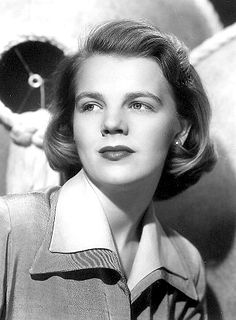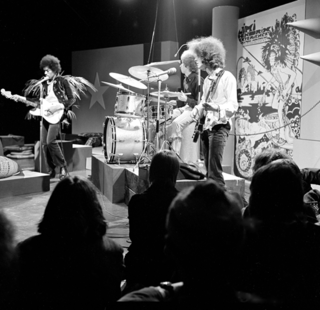History
Sylvania Electric Products, a television set manufacturer, gave the annual Sylvania Awards from 1951. [1] The awards were given for advancing creative television techniques. The Sylvania Award was as prestigious as the Emmy Award in the early days of television. It was one of several developed in the 1950s after the Emmy award was founded in 1949. Others included the TV Guide Award and the Look Magazine TV Award. Ed Sullivan gave out the Michael award in Los Angeles from 1950 to 1953. [4]
In 1951 the Sylvania award for best program suitable for children was given to Zoo Parade by the National Congress of Parents and Teachers, headed by Mrs. Johnny Hays. The awards for 1953 were presented in New York on 1 December 1953, with winners announced in advance. No grand award was presented. Winners included Rod Steiger (actor) and Paddy Chayefsky (script) for Marty , Donald O'Connor, Danny Thomas and Mary Martin. The 1955 awards were presented by broadcaster Deems Taylor on 29 November 1955. Sylvester L. Weaver Jr., head of NBC, received an award.
1957 Sylvania Television Award winners included Mary Martin, Dinah Shore, Marian Anderson, Steve Allen and Jack Paar. The 1958 awards were presented in January 1959 at a ceremony in the Grand Ballroom of the Plaza Hotel in Manhattan attended by about 400 guests including performers and representatives of networks, TV stations and production companies. Comedian Orson Bean was the master of ceremonies. The awards were presented by Don G. Mitchell, chairman and president of Sylvania Electric Products. In 1959 Sylvania Electric Products merged with General Telephone to form General Telephone and Electronics (GTE). The awards for 1959 were the last. [1]

Rebecca De Mornay is an American actress and producer. Her breakthrough film role came in 1983, when she starred as Lana in Risky Business. She is known for her role as Debby Huston in the Neil Simon film The Slugger's Wife. Rebecca is also known for her portrayals of Sara in Runaway Train (1985), Thelma in The Trip to Bountiful (1985), Helen McCaffrey in Backdraft (1991), and Peyton Flanders in The Hand That Rocks the Cradle (1992).

7th Heaven is a 1927 American silent romantic drama directed by Frank Borzage, and starring Janet Gaynor and Charles Farrell. The film is based upon the 1922 play Seventh Heaven, by Austin Strong and was adapted for the screen by Benjamin Glazer. 7th Heaven was initially released as a standard silent film in May 1927. On September 10, 1927, Fox Film Corporation re-released the film with a synchronized Movietone soundtrack with a musical score and sound effects.

Rodney Stephen Steiger was an American actor, noted for his portrayal of offbeat, often volatile and crazed characters. Cited as "one of Hollywood's most charismatic and dynamic stars," he is closely associated with the art of method acting, embodying the characters he played, which at times led to clashes with directors and co-stars. He starred as Marlon Brando's mobster brother Charley in On the Waterfront (1954), the title character Sol Nazerman in The Pawnbroker (1964), and as police chief Bill Gillespie opposite Sidney Poitier in the film In the Heat of the Night (1967) which won him the Academy Award for Best Actor.

Geraldine Sue Page was an American actress. She earned acclaim for her work on Broadway as well as in major Hollywood films and television productions, garnering an Academy Award, two Primetime Emmy Awards, two Golden Globes, a BAFTA Award, and four nominations for the Tony Award.

Rachel Kay Foulger, known professionally as Rachel Ames, is an American film and television actress.

Marilyn Monroe (1926–1962) was an American actress who appeared in 29 films between 1946 and 1961. After a brief career in modeling she signed short-term film contracts, first with 20th Century Fox, then Columbia Pictures, and appeared in minor roles for the first few years of her career. In 1950, she made minor appearances in two critically acclaimed films, The Asphalt Jungle and All About Eve. The parts in the two films were against many of the roles into which she was typecast, that of the dumb blonde. Margot A. Henriksen, her biographer with the American National Biography, considers the typecast "an unfair stereotype that bothered her throughout her career".

Immingham Dock electric railway station was the western terminus of the inter-urban Grimsby and Immingham Electric Railway which ran from Corporation Bridge, Grimsby with a reversal at what was euphemistically called Immingham Town.
Grimsby electric railway station was the eastern terminus of the Grimsby and Immingham Electric Railway, the western terminus being Immingham Dock, 7 miles (11 km) to the north west.
Immingham railway station was a special excursion station built along the port's eastern jetty to cater for traffic to passenger ships on cruises to the North Cape, Norwegian Fjords and the Baltic.

The English comic singer, monologist and actor Stanley Holloway (1890–1982), started his performing career in 1910. He starred in English seaside towns such as Clacton-on-Sea and Walton-on-the-Naze, primarily in concert party and variety shows. The first of these, The White Coons Show, was soon followed by the more prestigious Nicely, Thanks! in 1913. From here, he went on to co-star in The Co-Optimists, a variety show which brought him to wider audience attention. After the First World War, he returned to London and found success in the West End musicals at the Winter Garden Theatre, including Kissing Time (1919), followed in 1920 by A Night Out. The Co-Optimists continued until 1927, and he then appeared in Hit the Deck, a comic musical which appeared both in London and on Broadway. Reporting for The Manchester Guardian, the theatre critic Ivor Brown praised Holloway for a singing style "which coaxes the ear rather than clubbing the head."

Audie Murphy was a highly decorated American soldier and Medal of Honor recipient who turned actor. He portrayed himself in the film To Hell and Back, the account of his World War II experiences. During the 1950s and 1960s he was cast primarily in westerns. While often the hero, he proved his ability to portray a cold-blooded hired gun in No Name on the Bullet. A notable exception to the westerns was The Quiet American in which he co-starred with Michael Redgrave. Murphy made over 40 feature films and often worked with directors more than once. Jesse Hibbs who directed To Hell and Back worked with the star on six films, only half of which were westerns. When promoting his 1949 book To Hell and Back he appeared on the radio version of This Is Your Life. To promote the 1955 film of the same name, he appeared on Ed Sullivan's Toast of the Town. He was a celebrity guest on television shows such as What's My Line? and appeared in a handful of television dramas. Murphy's only television series Whispering Smith had a brief run in 1961. For his cooperation in appearing in the United States Army's Broken Bridge episode of The Big Picture television series he was awarded the Outstanding Civilian Service Medal.
Paul Wayne is a Canadian writer. He wrote sketches of television variety shows, like The Smothers Brothers Comedy Hour that he won an Emmy Award for, and episodes of other television shows, like Three's Company. He also served as producer of only two short-lived sitcoms, Doc and Excuse My French.

Jimi Hendrix (1942–1970) was an American guitarist and singer-songwriter whose career spanned from 1962 to 1970. He appeared in several commercially released films of concerts and documentaries about his career, including two popular 1960s music festival films – Monterey Pop (1968) and Woodstock (1970). A short documentary, Experience (1968), also known as See My Music Talking, was also screened.
Juan Armenteros was a professional Cuban baseball player in the Negro Leagues. He played as a catcher for a number of teams including the Kansas City Monarchs from 1953 to 1955 as well as the Havana Cubans from 1951 to 1953. Armenteros played in the 1953 East-West All-Star Game as well as the Negro Leagues All Star Team for three years.

American actor and producer Michael Douglas began his film career with a brief uncredited role in Cast a Giant Shadow (1966). In the same year he played a small role in the play Bedford Forrest. His performance in Hail, Hero! (1969) earned him a nomination for the Golden Globe Award for Most Promising Male Newcomer. He won the 1971 Theatre World Award for Pinkville. During 1972–76, he played the lead role in the TV series The Streets of San Francisco. In 1975, Douglas produced One Flew Over the Cuckoo's Nest which won the Academy Award for Best Picture, Golden Globe for Best Picture and BAFTA Award for Best Film.

Rod Steiger was an American actor who had an extensive career in film, television, and stage. He made his stage debut in 1946 with Civic Repertory Theatre's production of the melodrama Curse you, Jack Dalton!. Four years later, he played onstage in a production of An Enemy of the People at the Music Box Theatre. A small role in Fred Zinnemann's Teresa (1951) marked his film debut. In 1953, he played the title role in the teleplay "Marty" to critical praise. His breakthrough role came with the crime drama On the Waterfront (1954), which earned him an Academy Award for Best Supporting Actor nomination, and subsequent appearance in Fred Zinnemann's musical Oklahoma!.

The Hammond Electric Bridge Table was an electromechanical automatic card shuffling machine that dealt playing cards at random to four bridge players. The mechanism was built into a card table. The main concept of the machine was as a labor saving aid for bridge players in dealing out the hands. The invention was an offspring from the Hammond Clock Company as an additional product. It was a popular device when first introduced at the pre-Christmas season of 1932. That was short lived, however, and production lasted only a couple of years.
Eastern Entrance to Immingham Dock electric railway station was a temporary halt 62 chains (1.2 km) by route south east of the western terminus of the inter-urban Grimsby and Immingham Electric Railway which ran from Corporation Bridge, Grimsby with a reversal at what was euphemistically called Immingham Town.












